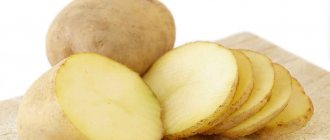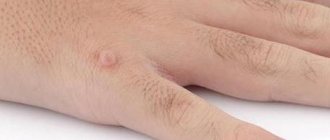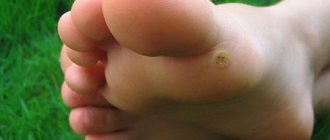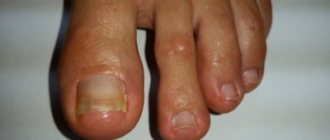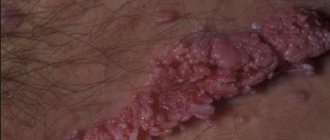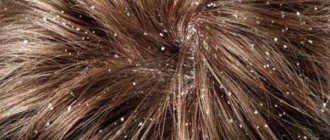June 13, 2020
The desire to find out all the possible ways to remove a wart at home is understandable, since the appearance of these growths causes great discomfort and even pain. But if you try to do it yourself, you can face serious consequences. Let's consider popular folk methods and their possible complications, as well as which doctor to contact to remove a wart.
Pharmacy drugs against warts
To remove warts at home, people use folk remedies or pharmaceutical preparations. Among the latter, immunomodulatory and antiviral drugs are especially common:
- Oxolinic ointment. This is an antiviral ointment that is applied to problem areas of the skin and mucous membranes.
- Viferon. Antiviral and at the same time immunomodulatory ointment, which causes cells to actively regenerate.
- Isoprinosine and Acyclovir. Antiviral drugs used in the form of tablets for oral administration.
- Salicylic acid. Has a cauterizing effect. It is used in the form of a 5 or 10% solution, which is applied directly to the tumor. It is important to avoid contact of acid with healthy skin, otherwise it may cause burns.
Many people decide to remove the wart with Salipod. This is another pharmaceutical drug, but presented in the form of a patch. It is used to remove plantar warts on the feet. The patch is based on salicylic acid, which has a cauterizing effect. The patch softens the top layer of skin, which you then need to remove yourself. But it is important to consider that Salipod does not always completely remove the wart and does not eliminate the risk of its reappearance.
Specialized pharmaceutical preparations for removing warts also include:
- Verrucacid,
- Hemosol,
- Collomak,
- Flexitol,
- Intensive,
- Balsam.
How do our clinic specialists remove papillomas with liquid nitrogen?
The process of removing papillomas includes several stages:
- Freezing A specialist applies very low temperature liquid nitrogen directly to the papilloma using a cotton swab.
- Necrosis Under the influence of a chemical, the papilloma becomes white, the patient feels a burning sensation. The procedure lasts only a few seconds, but this is quite enough to cause serious damage to the tumor.
- Restoring blood circulation After cryodestruction, the area where the tumor was located turns a little red, and slight swelling may appear.
- Healing of the neoplasm This stage lasts from 10-14 days to 2 months. After this time, only a crust remains of the papilloma, under which absolutely healthy skin cells are formed.
- Recovery period
After 5-6 months, no trace remains at the site of the papilloma.
If the papilloma is very large, the doctor at VIVO CLINIC will prescribe a repeat cryodestruction procedure. It happens that a small bubble with clear liquid forms at the site of the procedure. It cannot be pierced; it is necessary to regularly treat this area with an antiseptic until it disappears completely, and it is better to contact a clinic specialist for consultation.
How to remove a wart with home remedies
Popular folk remedies for removing warts include celandine. It is necessary to squeeze out the juice of this plant and apply it to the neoplasm without affecting healthy skin. Otherwise, a burn may remain around the wart, which will take a long time to heal. To avoid this, many people treat adjacent tissues with baby cream before removing the wart with celandine. But even in this case, you need to be as careful as possible when applying the product.
A few more methods common in folk medicine:
- Remove wart with iodine. Has a cauterizing effect. The essence of the method is to apply a cotton swab soaked in iodine. It is also applied directly to the wart itself.
- Remove the wart with garlic. The sulfur compounds in its composition have an antiviral effect, so it is believed that garlic helps faster than other methods. Ointments, infusions and compresses are made from it.
Why you can’t remove skin tumors yourself
First of all, removing a wart on your own most often does not allow you to do it aesthetically. After the procedure, difficult-to-heal wounds remain, and then in their place - scars. Other consequences include:
- severe bleeding when removing large warts;
- increased risk of wound infection;
- development of an allergic reaction;
- getting burned;
- damage to neighboring healthy tissues.
The disadvantages of home methods also include the duration of treatment. For example, the application of ointments should occur over several months, and this does not guarantee a positive result. In this case, treatment has to be carried out even several times a day.
Also, when deciding to remove a wart at home, a person exposes himself to some danger. Experts do not recommend doing this yourself using traditional methods, and there are several reasons for this:
- You cannot know exactly what types of tumors have appeared on your skin. This can only be determined during specialized diagnostics, which allows one to assess the degree of danger of the formation.
- Removing the tumor on your own can lead to an exacerbation, and the number of warts will increase - they will spread to neighboring areas of the skin.
- Incorrect treatment of a wart can increase the risk of a benign tumor developing into a malignant one.
Contraindications to self-treatment
Although you can remove a wart on the hands, feet or other part of the body in different ways, including without going to the hospital, and using ordinary household products like vinegar and garlic at home, there are some cases when a visit to a specialist cannot be postponed, and even more so , undertake independent treatment.
In what cases should you consult a doctor:
- If warts multiply at a rapid pace, conquering new territories for themselves;
- If the rashes are large and have a strange shape;
- If there are warts on the face or neck, in this case it is forbidden to treat them yourself;
Unqualified treatment can damage the delicate skin on the face, so it is best to consult a physician.
- If warts appear in children, especially small ones;
- If a wart grows suspiciously quickly, its shape and color change. It could even be a sign of malignancy. An urgent visit to a specialist is necessary;
- If a wart on the arm or other part of the body bleeds, you cannot remove it yourself;
Methods of official medicine
The PsorMak clinic specializes in one of the safest and most effective methods for eliminating warts. It is based on the use of a specialized device “Surgitron”. It has the function of exposure to high-frequency radio waves.
The use of the Surgitron device allows you to quickly remove a wart. In comparison with other official methods (laser, electrocoagulation, cryodestruction, surgical excision), this method has several advantages:
- accessibility due to the low cost of the procedure;
- rapid tissue healing (in 5-7 days);
- almost complete absence of contraindications;
- keeping healthy tissue intact;
- absence of scars and cicatrices after removal;
- The minimum duration of the procedure is 20-30 minutes.
It is very important that the radio wave method of wart removal is absolutely safe.
In addition, at the PsorMak clinic, if necessary, an additional biopsy of the tumor can be performed, which will help to accurately confirm the nature of the wart. To do this, you need to make an appointment with our dermatologist. Use the online form on the website or call us at contact numbers, +7 (495) 150-15-14. June 13, 2020
Author of the article: dermatologist Mak Vladimir Fedorovich
Removal of warts with liquid nitrogen, cryodestruction
Liquid nitrogen is a colorless liquid that boils at room temperature and emits thick steam. It is actively used in cosmetology for the removal of warts, moles, papillomas and other benign neoplasms. This procedure for removing papillomas is safe and painless and is performed without anesthesia.
After removing papillomas, warts, moles or other formations, you can immediately wash the skin with any detergent. The procedure completely eliminates bandages, plaster sealing and other methods of protection from moisture. In some cases, experts recommend treating the area where the tumors were with a solution of potassium permanganate for three days. Often, already on the 3-7th day after the cryodestruction procedure, any formations on the skin dry out, become crusty and fall off on their own. There are no spots or scars left at the site of moles and other neoplasms, the skin is smooth and clean.
During cryodestruction, the doctor applies a cotton swab pre-moistened in liquid nitrogen to the wart or any other neoplasm. As a result of cauterization, the neoplasm turns white, then turns red and is completely rejected on the 10-14th day.
Types of neoplasms (warts and papillomas)
There are more than a hundred types of different neoplasms caused by subtypes of the human papilloma virus. The most common are common warts, papillomas, condylomas, dry calluses, and corns. Only a doctor can determine by what type of virus the growths were formed after examination, as well as by examining the source material of the growth, this is necessary to assess the risk of oncology formation.
Common papillomas
The virus appears in the form of flesh-colored or gray-brown nodules with a dense surface consistency, having a diameter of 0.1 to 1 cm. Most often they appear on the back of the hands, neck, elbows, armpits and on the external genitalia. With high immunity, they can pass on their own within several years.
Plantar warts
Visually they are very similar to calluses, but differ from them in the accumulation of small growths united into a single structure, causing painful discomfort when walking. Appear on the soles or between the toes. The pressure of tight and uncomfortable shoes, especially with excessive sweating of the feet, increases the risk of plantar warts. At first, a small shiny plaque or papule of a yellowish-gray hue eventually acquires a keratinized, uneven surface.
Flat or juvenile warts
They usually occur in children or adolescents, and have the form of small compactions with a diameter of up to 5 mm with a round or irregular shape, practically do not protrude above the skin and rise only 1 or 2 mm. These neoplasms are usually located on the back surfaces of the hands, on the shins, and can also appear on the skin of the face. Most often, this occurs due to irritation or injury to the epidermis.
Condylomas acuminata
Warts of the corresponding type, located in the genital area, vary in color from light flesh-colored to bright pink. These neoplasms occur after infection with the papilloma virus through sexual contact, especially if the organs, as well as the groin area, are injured or have small cracks. For patients with such warts, experts recommend that they be removed in a timely manner, as they can grow and provoke the development of other infectious diseases of the reproductive system or the occurrence of oncological processes in them.
Senile warts
They are called keratomas and they arise due to age-related changes in the body and have nothing to do with the virus. These are plaques with a grayish or brown flat surface ranging in size from 0.5 to 2 cm, and of very different shapes. They develop from the cells of the basal (outer) layer of the epidermis or around the hair follicle, from keratinocytes.
Causes of warts under the arms
It is an established and confirmed medical fact that the appearance of warts of any kind is associated with human infection with the papilloma virus, which can remain in the body for a long time in a latent, inactive state. In this case, the carrier does not even suspect the presence of a viral agent in the blood. Infection can occur in several ways:
- Personal contact with a carrier of the papilloma virus;
- Household way - using common personal items: towel, comb, etc.;
- Autoinaculation – self-infection (damage to healthy areas of the epidermis by a virus);
- Penetration of HPV into the body through microcracks and cuts during shaving or epilation of the armpits;
- Transmission of the viral carrier from mother to child through the placenta.
It should, however, be understood that in order to activate the life of the virus, it is necessary to create accompanying conditions. The most important factor provoking the appearance of hanging warts under the arms is a sharp decrease in immunity, which can be associated with vitamin deficiency, poor nutrition, stress and overwork. In addition, the formation of warts under the arms is most often observed during periods of severe inflammatory and infectious processes or against the background of hormonal imbalance.
How to get rid of warts on the leg in other ways
In addition to folk recipes and pharmaceutical drugs, there are other effective means of combating neoplasms.
Dry ice
You can remove a wart by simply pressing a piece of dry ice onto it. You need to hold it for as long as you can tolerate - this method is not painless. You also need to be careful not to damage the healthy skin of the leg around the tumor.
The method does not work the first time - it will need to be repeated 3-5 times a day, every 2-3 hours.
≡ Types of neoplasms (warts and papillomas)
Removing warts is the most effective method of treating keratinized areas of skin affected by the human papillomavirus. Warts are usually benign in nature and, apart from being aesthetically unattractive, usually do not cause concern, but have a risk of developing cancer.
There are such types of wart removal as: Surgical or radio wave, cryodestruction, electrocoagulation and laser removal
Timely and precise treatment of warts with SUPERCLEAN MARKER ensures fast and effective removal of growths, restoring the natural appearance of the skin surface. Immunotherapy is recommended as an adjunctive therapy to contain the virus and improve health.

